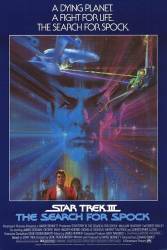Factual error: According to "The Doomsday Machine", full impulse drive is one-quarter the speed of light. In the first two movies, Enterprise used thrusters as opposed to impulse drive to leave Spacedock, confirming the notion that impulse drive is far too fast to leave such a (comparatively) small structure. Styles, however, orders Excelsior to one-quarter impulse, which is 18,750 km/s. In one second, she will travel half again Earth's diameter. From the time he gives the order to the time we see Excelsior clear spacedock's doors is approximately 40 seconds. Even allowing 30 seconds to go from rest to one quarter impulse, spacedock must be 13-15 times bigger than Earth! That's some serious engineering. (00:23:45)
Suggested correction: I reckon the writers always refer to levels of "impulse power" precisely so they don't have to worry too much about particular speeds (personally I always thought of it as roughly analogous to gears on a vehicle, but your mileage may vary). They use impulse to leave dock in both Star Trek II: The Wrath of Khan and Star Trek VI: The Undiscovered Country (it's implied to be unusual in both cases, for what it's worth). If all of that contradicts an earlier episode, I think we're looking at more of a retcon situation than a mistake.
Suggested correction: The warp scale has been adjusted several times, so it is impossible to say precisely how fast this fictional technology is, and by extension, how fast impulse is.
Impulse drive speed on starships have been consistent. Although sometimes quarter impulse on a shuttle refers to quarter power and not speed. Even if the speed of quarter impulse is 10 times slower than suggested (and used in the series), spacedock would still be 1.3-1.5 times bigger than Earth, which it wasn't. "It's fictional technology" is usually only a valid correction if the technology isn't explained in-universe. However, when certain parameters regarding fictional technology are established (even if they set wide parameters such as warp speed velocities) violations or contradictions (through bad script writing or whatnot) are valid mistakes.
Factual error: When the sun sets on Genesis, it happens too quickly for a planet with an atmosphere, as well as having a crisp shadow that it wouldn't have. The view of the sun as it's setting is that of a planet with no atmosphere. (00:54:00)





